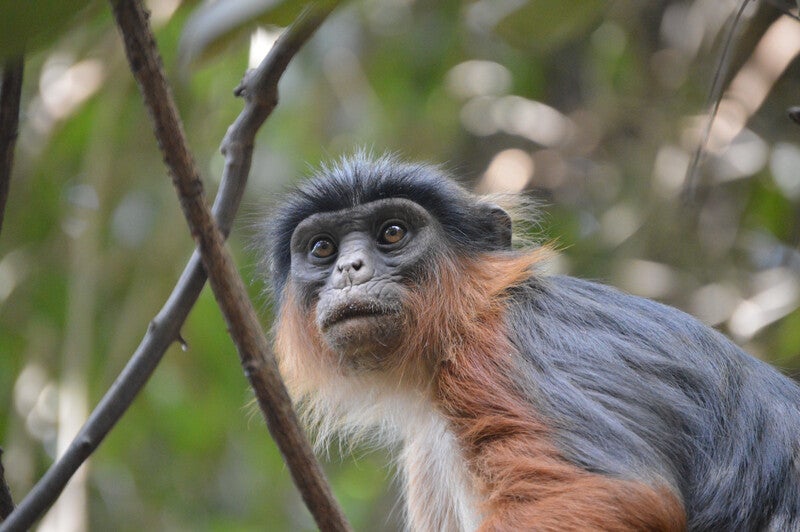Amazonia
Amazonia Under Threat
The expansive Amazonia rainforest is perhaps the most iconic and well-known of the world’s wildlands. It is a lush tropical landscape that is not just one rainforest, but in fact, home to half of the world’s tropical forests, in addition to the largest river system on Earth. Millions of wildlife species—many of which haven’t even been discovered or described—live in Amazonia, making it an important region of biological discovery.
Extending across all or part of eight countries (Brazil, Bolivia, Colombia, Ecuador, Guyana, Peru, Suriname, Venezuela, and the French overseas department of French Guiana) Amazonia is one of the world’s five designated High-Biodiversity Wilderness Areas. A number of species, some of them Critically Endangered, live here and nowhere else in the world, including the:
- White Uakari Monkey
- White-browed Spider Monkey
- Amazon River Dolphin
- Guianan Cock-of-the-Rock
- Rio Branco Antbird
- Yellow-spotted River Turtle
- Sky Blue Poison Dart Frog
- Pebas Harlequin Toad
- Giant Monkey Frog
- Pirarucu fish
- Arapaima
This irreplaceable place is also critically important to the estimated 20 million Indigenous peoples from more than 350 Indigneous groups, several of whom still live in voluntary isolation from the outside world. These Indigenous peoples depend on natural ecosystems and resources for their livelihoods and culture, and have traditionally lived in harmony with their natural environments for generations.
The benefits of Amazonia for the rest of the planet are hard to overstate. Amazonia stores up to 140 billion tons of carbon, effectively playing its role in tempering the climate crisis—if we let it. It plays a critical role in our water cycles, weather patterns and regulating our climate. It is also home to thousands of plant species, many that have been studied for their potential medicinal benefits.
For these reasons, Re:wild and our partners work tirelessly to protect, restore and promote the sustainable use of Amazonia, which has come under greater threat in the last few years than ever before in its history. Illegal logging, dams, burning, mining, agriculture (including cattle ranching and soybean farming to feed the cattle) are running rampant in every Amazon country, in many places with impunity. Even as Indigenous peoples and their allies protect their land, cultures and lives against illegal encroachment, federal governments are considering opening those lands to legal extractive industry. And forest fires are burning hotter and faster, in part the result of the drier microclimate that comes with deforestation.
The Re:wild Solution
Re:wild supports more than 35 partners in Amazonia on the front lines protecting this special place. We have channeled resources to dozens of projects throughout Amazonia in Brazil, Bolivia, Colombia, Ecuador, Peru, Venezuela and Suriname. Our work is helping improve conservation of more than 99.8 million acres of protected areas and Indigenous Community Conserved Areas (ICCAs) and contributing support to land titling efforts for 120 Indigenous communities over 5.9 million acres.
In addition to supporting fire response and prevention efforts, and forest restoration projects to restore areas that have been damaged or destroyed, we are also a founding partner of the Amazon Emergency Fund, which provides essential support to the Indigenous peoples across Amazonia to deal with the ongoing COVID emergency.
At the policy level, we are also supporting the call by Indigenous peoples of Amazonia to put a moratorium on extractive activities and launch unprecedented legal and political battles to guard their rights and territories. This work includes direct support to Indigenous peoples and organizations.
We also recognize that one of the largest opportunities for rewilding in many countries of Amazonia is to move quickly away from a development model that is based on animal agriculture. We are therefore working on multiple fronts to replace cattle with forests and forest-based livelihoods across Amazonia.




